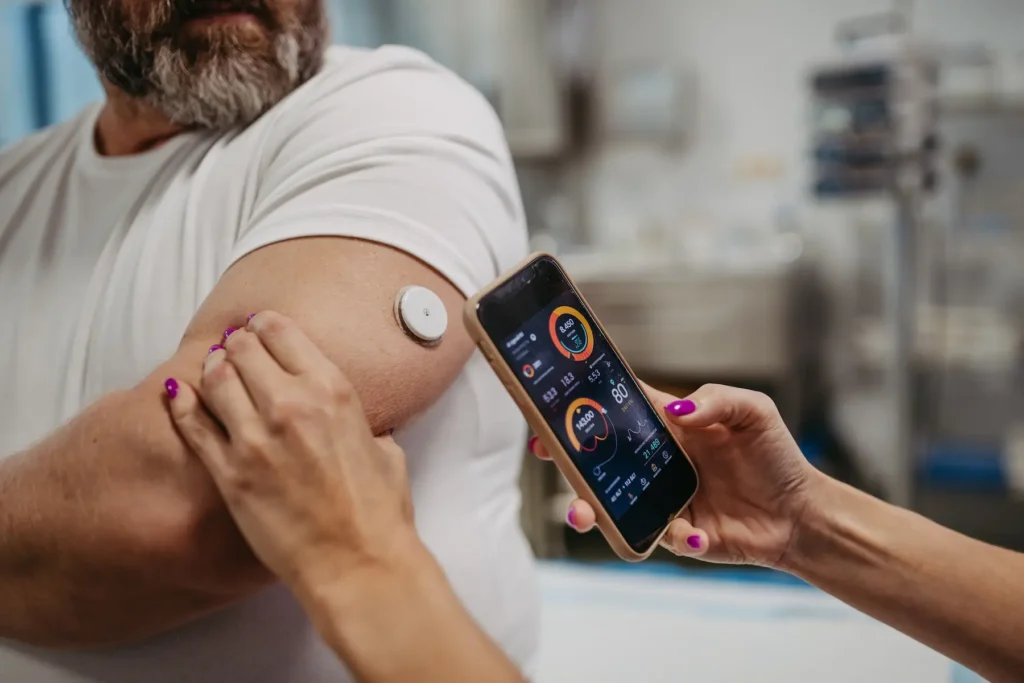In the realm of diabetes management, Continuous Glucose Monitors (CGMs) have revolutionized how patients and healthcare providers monitor and manage blood sugar levels. The detailed data collected by these devices, often referred to as “CGM data,” serves as a comprehensive report card for patients. This blog explores the significance of CGM data, its benefits, and how it can enhance diabetes care and patient outcomes.
Understanding CGM Data
Continuous Glucose Monitors (CGMs) provide real-time data on blood glucose levels, offering a continuous stream of information throughout the day and night. CGM data includes metrics such as average glucose levels, time spent in the target range, glucose variability, and patterns of highs and lows. This data is crucial for understanding a patient’s glucose control over time and making informed decisions about their diabetes management.
The Value of CGM Information in the Treatment of Diabetes
CGM data is essential for managing diabetes for a number of reasons.
Real-Time Monitoring
CGMs provide continuous glucose monitoring, which allows patients and healthcare providers to see real-time glucose levels. This immediate feedback helps in making timely adjustments to diet, exercise, and medication, leading to better glucose control.
More Read About : Disparity in Continuous Glucose Monitor Use Among Kids
Detailed Glucose Trends and Patterns
CGM data reveals detailed glucose trends and patterns that are not visible with traditional finger-prick tests. Understanding these trends helps identify factors that affect glucose levels, such as specific foods, stress, and physical activity.
Improved Glycemic Control
By analyzing CGM data, healthcare providers can make precise adjustments to a patient’s treatment plan. This personalized approach leads to improved glycemic control and reduces the risk of diabetes-related complications.
CGM Data as a Report Card
CGM data can be viewed as a report card for patients, providing a comprehensive overview of their glucose control. This report card includes several key metrics:
Time in Range (TIR)
Time in Range (TIR) is a critical metric that shows the percentage of time a patient’s glucose levels are within the target range. Higher TIR indicates better glucose control and is associated with reduced risk of complications.
Average Glucose Levels
Average glucose levels provide an overall picture of a patient’s glucose control over a specific period. Maintaining average glucose levels within the target range is essential for preventing long-term complications.
Glucose Variability
Glucose variability measures the fluctuations in glucose levels. Lower variability indicates more stable glucose control, which is crucial for reducing the risk of hypoglycemia and hyperglycemia.
Patterns of Highs and Lows
Identifying patterns of highs and lows helps pinpoint the causes of glucose fluctuations. Addressing these patterns through lifestyle changes or medication adjustments can improve overall glucose control.
Benefits of Using CGM Data
The use of CGM data offers numerous benefits for both patients and healthcare providers:
Enhanced Patient Engagement
CGM data empowers patients to take an active role in their diabetes management. By seeing the direct impact of their actions on glucose levels, patients are more motivated to adhere to their treatment plans.
Personalized Treatment Plans
Healthcare providers can use CGM data to create personalized treatment plans tailored to each patient’s unique needs. Better health outcomes and more efficient diabetes treatment are the results of this tailored approach.
Early Detection of Issues
CGM data helps in the early detection of issues such as insulin resistance or the need for medication adjustments. It is possible to stop major difficulties from developing early on.
Improved Communication
Patients and healthcare professionals can communicate more effectively thanks to CGM data. Regularly reviewing CGM data together fosters a collaborative approach to diabetes management, ensuring that both parties are aligned in their goals.
Implementing CGM Data in Clinical Practice
To maximize the benefits of CGM data, healthcare providers should implement it effectively in clinical practice:
Routine Data Review
Regularly reviewing CGM data during appointments helps track progress and identify areas for improvement. This routine review ensures that the patient’s treatment plan remains effective and up-to-date.
Patient Education
Educating patients on how to interpret and use their CGM data is crucial. Providing guidance on understanding key metrics and making informed decisions empowers patients to manage their diabetes more effectively.
Setting Realistic Goals
Setting realistic and achievable goals based on CGM data helps patients stay motivated and focused. These goals should be tailored to each patient’s needs and adjusted as necessary.
Integrating Technology
Integrating CGM data with other digital health tools can enhance diabetes management. For example, using mobile apps that sync with CGMs allows patients to track their glucose levels, diet, exercise, and medication in one place.
Challenges and Considerations
While CGM data offers significant benefits, there are also challenges and considerations:
Data Overload
The continuous stream of data can be overwhelming for some patients. It is important to focus on key metrics and provide guidance on how to use the data effectively without causing unnecessary stress.
Cost and Accessibility
Some patients may find the constant onslaught of information to be too much to manage. Ensuring that these devices are accessible and affordable is essential for widespread adoption and use.
Accuracy and Reliability
While CGMs are generally accurate, occasional discrepancies can occur. Patients and healthcare providers should be aware of these potential issues and use the data as part of a comprehensive diabetes management plan.
Conclusion
The use of Continuous Glucose Monitors and the detailed CGM data they provide have transformed diabetes management. By serving as a comprehensive report card, CGM data offers valuable insights that help patients and healthcare providers make informed decisions. Better glucose control, increased patient involvement, and individualized treatment regimens are some advantages of using CGM data. While there are challenges to consider, the potential for better health outcomes makes CGM data an invaluable tool in the fight against diabetes.


